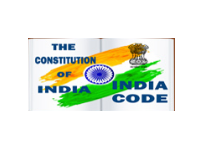Objectives of Performance Appraisal
4.1 The current objectives of the ACR system, as spelt out in the relevant rules/guidelines applicable to different organizations studied by the group, vary considerably in wording but not too much in essence. For example, the objectives of performance appraisal in respect of the All India Services have been spelt out as follows:
- “To provide basic and vital input for assessing the performance of an officer and for his/her advancement in his/her career”
- “To be used as a tool for human resource development so that an officer realises his/her time potential”
4.2 Similarly, in the case of the Indian Army the objectives have been spelt out as follows:
- “To have an objective assessment of an officer’s competence, employability and potential, primarily for organizational requirements”.
4.3 The objectives of the ACR system in the Indian Railways are:
- “To assess the performance of the subordinate and provide guidance and counseling to him to improve his performance”
- “To assess potential and to prepare an employee through appropriate feedback and guidance for higher responsibilities”
- “To be a tool for human resource development”
4.4 In the Japanese Civil Services, performance appraisal has the following objectives:
- “To evaluate the standard of accomplishment of work, including character, ability and suitability connected to their work”
- “To decide on promotion, transfer, change, special raise in salary”
- “To help give recognition to good performers and to counsel under performers”
4.5 A sampling of the objectives of performance appraisal, in case of some of the other organizations studied by the group, is given at Annex 7.
4.6 Given the rapidly evolving challenges of public management, the Group felt that the present objectives of performance appraisal, especially for the All India Services, need to be widened and deepened to respond to the emerging needs of governance. In this context, performance appraisal cannot serve only to assess suitability for vertical movement, but should be primarily used for the overall development of an officer, and for his placement in an area where the most advantage can be taken of his abilities and potential. The Group is of the view that performance appraisal should be constructive and advisory in nature, to be used as a tool for the development and career planning of the officer, as opposed to a simple judgmental exercise, which is largely the case at present. There is, thus, a need for a paradigm shift in the philosophy of appraisal. To distinguish the new system, we refer hereafter to the “performance appraisal report (dossier)” (PAR) in place of the “annual confidential report (dossier)” (ACR). The term “ACR” is hereafter employed only when the present, rather than the prospective system is being referred to.
4.7 After detailed discussions the Group was of the view that the objectives of performance appraisal of AIS and Group ‘A’ services should be the following:
- To make an assessment of the officer’s professional capabilities, with a view to determining capacity building needs and suitability for particular areas of responsibility/assignments. (Training and Placement Function)
- To counsel the officer on directions for improving performance, professional capabilities, and conduct with peers, juniors, elected representatives, and the general public (Feedback and Counseling function)
- To be a tool for developing a work plan for the year (Planning of work function)
- To make an objective assessment of the officer’s performance in the current assignment, including performance in training, study courses and deputation outside the government, based on monitorable inputs, relative to his/her peers, with a view to determining suitability for higher responsibilities and special assignments. (Promotion Function)
- To identify genuinely exceptional work accomplished, including innovations, with a view to giving due recognition (Recognition function)
- To enable officers to identify systemic shortcomings in the organization with a view to improving governance standards (Strengthening Governance Function).
4.8 The ways in which the performance appraisal system can perform each of the above functions, except the promotion and placement functions, have been highlighted in the rest of this chapter. The ways in which it may be used for the promotion and placement functions are presented in the relevant chapters of Part II of this report.
4.9 The following matrix maps the problems encountered in the present system of ACRs with the proposed objectives:
Table 1: Mapping Weaknesses of the ACR System to Objectives of the PAR System
| Objective | Perceived Weaknesses related to realization of the objective |
|---|---|
| Planning work and setting work expectations |
|
| Feedback & Counselling |
|
| Training & Placement |
|
| Promotion |
|
| Recognition |
|
| Strengthening Governance |
|
4.10 Training function
4.10.1 Every well-governed country needs a highly professional civil service to meet the needs of public policy formulation and public management. Several countries have recognized this need and have invested significant resources in upgrading the quality of their public service personnel. Given our myriad challenges of development, governance and changes in technology and the external environment, we cannot afford to lag behind. The performance appraisal system should, therefore, be an effective tool to identify gaps in an officer’s capabilities, so that such gaps can be addressed through proper skill development.
4.10.2 In the current system, the ACR forms provide for a column in which the Reporting officer gives recommendations for training with a view to further improving the effectiveness and capabilities of an office, but only upto the selection grade and not beyond. Besides, there is no effective system of ensuring that officers are able to attend training programs to meet their identified skill gaps. Even in cases where officers attend long duration training programs (often abroad at high cost to the government), many officers tend to take them lightly, since either there is no appraisal of performance during such training, or if any is made by the training institution, it is not reflected in the performance appraisal, and accordingly does not count in future career advancement.[1] Besides, selections for foreign and other prestigious training courses are not necessarily made on merit but on other factors like regional and service spread, etc.
Necessary features:
4.10.3 In this context, it may be recognized that training needs are of two kinds: (1) that needed to meet the requirements of an officer’s current or immediately forthcoming assignment, and (2) that needed to strengthen or impart the requisite skills and competence to discharge responsibilities at higher levels and in different thematic areas during one’s service. While the responsibility for sponsoring the officer for the first type of training should rest with the immediate supervisor/department, responsibility for sponsorship for the second category should rest with the training unit of the cadre controlling authority.
BOX 1: Functions of Civil Service Positions:
The functions of professional level civil service positions can be classified into three categories, i.e. Implementation; Program/Project Preparation; and Policy Formulation. The first relates to operations involving execution of existing policies, schemes, orders, guidelines, regulations, and laws (i.e. “the detailed execution of the public law”[Woodrow Wilson’s definition of “Public Administration”]). The second relates to preparation of action plans, under which distinct activities relating to accomplishment of specified policy objectives are encapsulated in a coordinated set of concurrent and sequential activities which are bound in space, time, required resources. The third relates to identification of problems, which may be addressed by public action, and in relation to these problems, identification of objectives, resources required, constraints, instruments, and strategic (i.e. long-term or not easily reversed) themes for public action (including public investments and regulatory and legislative measures). Policy formulation should precede the preparation of programs/projects in the strategic themes identified; the latter should precede their implementation. Each of these functions involves a body of formal knowledge, comprising methodologies, techniques, skills and norms, apart from practical experience.
Typically, in the early phase of a civil service career, the Implementation function dominates. The mix of functions of different positions gradually changes with ascending hierarchy of positions, with, first, increasing dominance of the program/project formulation function, and later increasing dominance of the policy formulation role.[2] Accordingly, in case of the IAS, field positions upto and including the Deputy Commissioner/Collector largely focus on implementation; positions of Heads of Line Agencies (e.g. Agriculture or Education) have a greater component of program/project preparation (with perhaps some exposure to policy formulation); while positions of Secretary in the State Governments/Joint Secretary (and above) at the Centre have increasing focus on policy formulation (while retaining some aspects of the other two functions).
The formal training at initiation into the civil services concentrates largely on acquisition of Implementation skills (besides acculturation into the civil service ethos and traditions). There is very little attention to program/project preparation or policy formulation skills at that stage. The deficiency is not made good in any systematic manner later in the typical civil service career. Accordingly, there is need to work out mid-career training schedules to address these needs at the appropriate stage(s). Satisfactory completion of the required training programs should be mandatory for promotions, at least at the Super-Time Scale and above.[3]
4.11 Amendments proposed to the present system:
4.11.1 Given these requirements, the annual performance appraisal would be a useful tool for identifying training needs for an officers current/forthcoming assignment. To facilitate such identification, the appraisal system should provide for the officer to indicate his training needs as he perceives them. Thereafter, the Reporting Officer may comment on this stated requirement, and if he agrees with the identified needs, indicate (in the next annual cycle) the steps taken by him to enable the officer to attend the requisite training program(s).
4.11.2 With regard to the training requirements for occupying higher positions and in different thematic areas, these have to be met through a combination of mandatory career courses[4] and optional training programs, organized by the training unit of the cadre controlling authority. The performance in such career courses should be one of the criteria for various personnel actions (e.g. promotions, placements, etc.) .
4.11.3 Thus, the responsibility for deputing an officer for such training should primarily rest with the reporting officer. The training unit of the cadre controlling authority should be responsible for making a wide menu of training programs available. Based on the (agreed) identified needs, Reporting officers should choose specific training programs from the menu and ensure that the officer reported upon is given the opportunity to attend the requisite training identified by/for him. The information contained in the year-to-year performance appraisal reports should be used, by the training unit of the cadre controlling authority, to ensure that the menu of training options covers the required topics.
BOX 2: Evaluating the acquisition of professional skills:
Professional skills of officers may relate to the three functional categories (Implementation, Program/Project Preparation, and Policy Formulation) as well as to specific themes (e.g. Domain Areas, Specializations). Skill acquisition is through two distinct processes. In the first, formal knowledge relating to the skill may be acquired through courses of institutionalized training and/or academic study (including research)[5]. In the second, the formal knowledge acquired may be validated and strengthened through work experience. In general, formal knowledge and work experience are complements, rather than substitutes. Thus, a claim to Domain or Specialized knowledge, or policy formulation skills solely on the basis of either formal training or work experience would be less plausible than a claim based on both.
Indicators of the level of skill acquisition would, accordingly, relate to performance in each of the processes of skills acquisition. Thus, the indicators would be performance levels in relevant training/academic study (including research)[6], as well as in work performance revealed in the PARs.
Currently, in respect of training/study courses participated in, a record is (supposedly) maintained in the ACR dossier, without, however, recording the performance levels. The existing practice is sought to be enhanced by also recording the levels of performance in these courses. In respect of research completed, the current practice is to list all publications of the officer (professional or otherwise, peer reviewed or not). This practice is sought to be restricted to peer reviewed published research in the relevant professional fields, in order that the information is actually of value in determining whether relevant skills have been acquired. The proposed changes in practice would also be consistent with the principle that officers are accountable for their accomplishments during all time spent on Government account.
4.12 Planning Work and Setting Work Expectations
4.12.1 This objective of the performance appraisal system refers to identification of performance expectations of the appraisee in relation to the goals, targets and functions of the organization, as also of self-realization and development of the appraisee.[7] Performance expectations furnish one benchmark against which actual performance may be judged. The main weakness in the present system of performance appraisal which stymies the realization of this objective is that currently (at least in practice), the appraisal is not based on monitorable inputs of accomplishment of an agreed Work Plan.
Necessary features:
4.12.2 In order to be useful, performance expectations must be verifiable, i.e. at the close of the assessment period, it should be possible to determine, without ambiguity, whether or not the expectations have been realized. This is separate from the issue of giving credit for satisfactory or exceptional realization, or holding to account if realization is partial or absent. Verifiable expectations may involve quantitative targets (e.g. percentage of budget allocations spent in particular schemes, number of child immunizations accomplished, etc.) or may be qualitative descriptions of tasks to be accomplished (e.g. a particular policy document finalized and coursed through the Cabinet; a major project completed on schedule and within budget). The performance expectations should be subject to updating over the appraisal period, as new information becomes available, or if circumstances change significantly (“flexible”). Performance expectations may be prioritized in order of importance to the overall performance appraisal (“ranked”). Performance expectations should also be set in an interactive process, involving the appraisee, appraiser, and perhaps key colleagues whose support is essential to realization of this expectations (“consensual and achievable”). On the other hand, performance expectations cannot be established ex-post, after the appraisal period, nor can they be set without reference to the expectations of similarly placed appraisees (“fair and equitable”).
Problems:
4.12.3 At present, while the current PAR form has a provision for ex-ante setting of work targets and of reckoning achievements against the targets, this is generally not followed. Performance appraisal typically proceeds without reference to monitorable expectations. Some reasons for this situation are as follows:
- It is difficult to set individual work expectations in many situations, e.g. Secretariat assignments. Where it is feasible to set expectations on an organization-wide, or unit (group) basis, it may be difficult to translate them to individual targets. This may be on account of extensive requirements of cooperation from other team members to fulfill one’s targets. Alternatively, the targets/tasks may be conceptually meaningful only as the output of teams, rather than of individuals.
- There is a prevailing misconception that only quantitative targets are to be furnished in setting performance expectations. The notion that qualitative descriptions of tasks to be accomplished is an alternative, legitimate way to set performance expectations, against which actual accomplishment may be evaluated, is not clear to many.
- Government agencies are generally accultured to reacting to situations as they emerge, rather than anticipating and planning for them. Further, there is little interest in pro-actively seeking improvement in the functioning of Government agencies, and most officers are content with the status-quo in terms of systems, practices and functions. This results in an inability to identify meaningful, non-routine tasks which may be accomplished.
- There is no mechanism to ensure that the task of setting annual work plans at the beginning of the appraisal period is actually done.
4.12.4 The problems noted above may be addressed as follows:
Option 1:
4.12.5 At the beginning of each appraisal period, each appraisee should be required to prepare and submit for confirmation a draft Work Plan to the Reporting Officer. The Work Plan should provide quantitative targets where feasible, or qualitative but unambiguous statements of non-quantifiable tasks proposed to be accomplished, or both. The targets/tasks may relate to those of the appraisee, or of a defined Group of which the appraisee is a member. Where the targets or tasks relate to a Group as a whole, rather than of the individual, the specific responsibilities of the appraisee in ensuring that the Group is able to deliver on the work plan should be spelt out. In case of individual targets/tasks, it should set forth the requirements of inputs from colleagues or other agencies, as well as the staff, material and financial resources needed. The targets/tasks, whether of the appraisee or group, may also be prioritized in order of importance to the overall appraisal, and this prioritization should reflect the priorities attached by the agency itself to accomplishment of the targets/tasks. It is not necessary (and it may not be possible) for the work plan to be exhaustive; the targets/tasks may, for example, relate to the 8-10 targets/tasks that are most salient, listed in descending order of priority (most important first). The Work Plan may be finalized in consultation with the Reporting Officer, who in turn, may consult other colleagues as necessary, within a specified time, and promptly placed on record with the Reviewing Officer. The Work Plan may be updated by mutual consultation during the course of the appraisal period, if and when significant changes in the situation occur.
4.12.6 In the PAR itself, the self-assessment by the appraisee should consist primarily of recapitulation of the targets/tasks set forth in the Work Plan as well as the actual realization of the targets/tasks, whether by the individual or group, as applicable. Where departures are significant, the appraisee may explain the reasons for the divergences.
4.12.7 During the appraisal exercise, the Reporting Officer should comment specifically on the claims/explanations by the appraisee in respect of realization of the Work Plan. These observations should comprise a significant input to the overall grading[8].
Option 2:
4.12.8 This option is premised on the assumption that there are positions in which it is typical for rapid changes in the situation to confront the appraisee, on account of which it is difficult to set out a cogent work plan at the beginning of the appraisal period. (This may be the case, for example, of field officers responsible for security or law and order). In such cases, the appraisee would list ex-post, 8-10 significant tasks actually accomplished (by the Group of which s/he is a part, or individually), including an explanation of why these tasks could not be anticipated and listed in the Work Plan. In case of Group tasks, the specific role of the appraisee in accomplishing the tasks should be set forth.
4.12.9 The Reporting Officer would, in such cases, comment on the claims of the appraisee, and may add other significant tasks not reported by the appraisee, and give his opinion on the appraisee’s role in the accomplishment or failure to accomplish these additional tasks. These observations should form a significant input to the overall grading.
Choice between options
4.12.10 The Group recommends that a combination of the two options be adopted. The performance appraisal report should provide for a Work Plan to be set, as suggested in Option 1, but should also provide for an ex-post listing of significant tasks actually accomplished.
4.13 Feedback and Counseling Function
4.13.1 The exercise of providing feedback and counseling to the appraisee is to be undertaken essentially by the superior in recognition of his duties and responsibilities to develop the subordinate. Such feedback is important for the appraisee’s growth because it helps him to know his strengths, potential, and areas where improvement is required. Clearly, this would help better performance. Counseling is undertaken to encourage the appraisee to grow in maturity, to his potential, and to utilize his resources towards definite goals.
Necessary features:
4.13.2 The feedback and counseling function has to be conceived as being divided into three broad phases of an officer’s career life cycle: the early phase, the middle phase and the top phase. Clearly, the requirements of feedback at each stage will be different because the officer will be at different stages of the career life cycle and therefore, will need to be handled differently.
4.13.3 In the early phase, the focus of feedback and counseling would be on acculturation and grooming of the appraisee into the traditions, role, and ethos of the civil service, firstly in field conditions, and then in terms of secretariat work. In the middle phase, the appraisee would be maturing in his career. There he would be learning how to look at larger issues, draw sustainable conclusions on the basis of verifiable data, project valid conceptualizations, suitably source and utilize domain knowledge. In short, serve as a bridge between the policy and implementation. Feedback and counseling at this stage would have to be more generic in character and a fairly non-directive one. Learning to handle the political sensitivities at this stage would be more substantial than in the preceding phase.
4.13.4 In the top segment, the feedback and counseling would be much more subtle and almost among equals. In the technical sense of the word counseling at this stage would be considerably reduced and the emphasis would be on providing feedback and helping the individual to assess his own approaches more realistically. The earlier exposure to political sensitivities and perceptions now reach a point of very sensitive handling. At the middle level, while dealing with program formulation issues, the appraisee would have had some orientation in dealing with the policy orientation of political parties. At the top level, his exposure to the political executive would be a matter of routine occurrence and would, therefore, need greater finesse in handling the issues. In particular, the political executive may be his immediate superior. Given the mandate of the group, however, the civil servants’ reporting relationship with the political executive, is left out of the purview of this report. It is assumed that for the top level, especially where Secretaries to Government of India (Principal Secretaries to the State Governments) are concerned, feedback and counseling would come from the Cabinet Secretary (Chief Secretary of the State) and perhaps at a peer level from colleagues of equivalent rank in other Ministries with whom he has an interface.
4.13.5 The treatment of the topic of feedback and counseling has a second component, in addition to the one noted above, and that is of the “processes”.
It is important that the whole exercise be conducted in, as transparent and credible a manner as possible. This would enable strengthening of the constructive environment in the world of work of civil servants and support verifiable, timely and proactive corrections / measures of improvement.
4.13.6 It is suggested that feedback and counseling should be a parallel and concurrent process of the appraisal at each stage.
Amendments to the present system:
4.13.7 The start of the performance appraisal process is the setting of the Work Plan for the current year. This would be agreed at a one-on-one meeting of the appraisee and Reporting officer , at which the Work Plan proposed by the appraisee would be reviewed. Subsequently, at mid-year, the Work Plan may be updated by a similar process. It would be useful for these sessions to also be face-to-face counseling sessions between the appraisee and Reporting officer . In addition, the Reporting officer may utilize several other occasions during the year to counsel the appraisee, as needed. While detailed records of such counseling sessions may be difficult to keep, the Reporting Officer may record important aspects on which advice is rendered to the appraisee, particularly if significant remedial actions are suggested.
4.13.8 Indeed, more than any other component of the appraisal exercise, the effectiveness of the feedback and counseling effort will be what the participants to the process make it to be.
4.14 Promotion Function
4.14.1 One of the key functions of any performance appraisal system is to judge if an officer is suitable for occupying a higher position. This is partly assessed from the manner in which the officer has discharged his earlier responsibilities. Since there is an entire chapter in this report devoted to the promotion system, further details on how the performance appraisal system can be used for the promotion function have been elaborated in that chapter. It would be sufficient to note, at this stage, that the annual performance appraisal reports would give useful information for deciding suitability for promotion, but need not comprise the sole input for this personnel action.
4.15 Performance Appraisal as a Tool for Recognition
4.15.1 The performance appraisal system can be a useful tool for recognizing exceptional work done by an officer (or conversely, negative achievement) and for using it as a basis for special assignments and other rewards, including inputs to promotion. If the performance appraisal system is made more open, it would also contribute to conveying the appreciation (or dissatisfaction) of the superiors for a good work done by the appraisee (or negative achievement). This, in itself, would be an important method of “recognition”. Accordingly, a specific column providing for a mention about significant achievements (or negative achievements) would facilitate in recording such information, and using the same for appropriate personnel actions.
Necessary features:
4.15.2 “Significant achievement (or negative achievement)”, may arise in two aspects. First, “critical incidents”, which arise in the course of implementing one’s Work Plan, and in any case in the course of one’s mandated role in the civil service. Second, achievements which testify to one’s talents and exceptional qualities, which, while not related directly to one’s work responsibilities, nevertheless indicate a quality of mind and/or character that would be of value in public service. Examples of the latter may include, winning a prestigious international award for creative writing, or social service, or scientific research. In respect of the former, some detail is provided in Box 3 below:
Box 3: “Critical Incidents”
“Critical Incidents” refer to episodes that have a positive or negative bearing on the accomplishments of the organization.
A positive critical incident would relate to: (a) accomplishments outside reasonable expectations for the post; (b) how a top priority performance dimension has been demonstrated beyond expectations and over a sustained period of time; or (c) work that has led to substantial benefits or improvements (e.g. cost savings, streamlining procedures). Some examples are:
- In a situation where 20% of posts have been abolished, the 2IC reorganizes, streamlines, and prioritizes the work; thereby improving work flow and reducing stress among remaining staff.
- Following a major natural calamity, a relatively junior district officer organizes relief promptly and effectively, without awaiting evaluation and directions from his superiors, and thereby reduces distress of a large number of persons.
A negative critical incident documents: (a) work below reasonable expectations for the post; (b) how a top priority performance dimensions has been demonstrated below expectations and over a sustained period of time; or (c) work behaviors that led to substantial losses, disruption in the work of the unit, or damage to the organization. Some examples are:
- A supervisor consistently displays unprofessional conduct towards staff members, resulting in a climate of high tension and low morale in the organization.
- Unnecessarily strict adherence to regulations causes serious friction with an important client organization.
- A senior district officer fails to correctly anticipate and decisively pre-empt an outbreak of sectarian violence.
4.16 Performance appraisal as a tool for strengthening governance
4.16.1 This objective of the performance appraisal system refers to identification of performance expectations of the appraisee in relation to furtherance of “good governance” within the organization. Realization of “good governance” may involve either enhancing time and cost efficiency, and professional integrity of decision making going by existing decision making processes, or through process/procedural innovations to enhance good governance. Inclusion of these aspects in the performance appraisal system is premised on the belief that: (i) officers have sufficient information, knowledge, and creative impulse to innovate for, or otherwise accomplish improved governance; and (ii) that providing a means of recognition of such creativity or accomplishment would both help officers achieve self-realization, and help the organization better realize good governance. The following considerations are relevant to assessment of good governance accomplishments:
- The appraisee’s personal contribution to enhancement of governance standards of the organization, both within existing systems and through innovation.
- Perception of clients’ (internal and external) regarding enhancement of governance standards.
- The extent to which the enhancement of governance standards through innovation can be institutionalized, are sustainable, and of general applicability (i.e. to other public organizations).
Necessary features:
4.16.2 Although it has been obvious to informed observers of development programs for decades, it is only in the past few years that good governance has occupied center-stage among public management concerns. While several accounts exist of what are the essential features of good governance in procedures of public organizations, the following are generally accepted as the core: (i) clearly defined and legally tenable organizational mandates; (ii) unambiguous decision rules to accomplish just these mandates (and no occult objectives), which also specify responsibilities of officers at each stage of the decision process; (iii) clearly specified and minimal requirements of information and documentation from the client to support just these decision rules and no more; (iv) decision-making processes to be bound (and minimal) in time and costs; (v) transparency in that clients are provided with sufficient information once a decision is reached to enable them to represent meaningfully against the decision if they so wish; (vi) automatic internal mechanisms for determining responsibility in case the specified procedural and substantive requirements of decision making, including specified time-lines are not correctly followed, and (vii) at least one stage of official review or appeal against the decision. Evaluation of procedural innovations for good governance may rely on the above criteria.
4.16.3 Apart from procedural enhancements, good governance, may also relate to qualitative improvements in the outputs of organizations that are not in the nature of case-by-case decision-making on application from clients.
4.16.4 Contributions of an appraisee to good governance, either individually, or as a member of a team, would relate to enhancements, both in design and execution, of the existing regime in one or several of these dimensions. Good governance objectives could, in principle, be set forth in the individual/organization Work Plan (e.g. reduction of mean and variance (or upper limit) of time required for disposal of specific categories of cases; reduction in costs incurred either aggregatively or on average over individual cases). Alternatively, they may be addressed as issues arise or events unfold during the work cycle.
Problems with the present system:
4.16.5 Several problems have been identified as potentially impeding the realization of good governance:
- The present system of appraisal is not based on monitorable inputs, i.e. relationship to accomplishment of an agreed work plan. The agreed Work Plan may include setting performance standards (e.g. cost/time reductions, and their variance, in delivery of specified functions), or a plan of innovation in practices/procedures for good governance, including assessment of their replicability.
- There is no focus on exceptional work accomplished, whether within or outside the Work Plan, including in particular, that relating to innovations for good governance.
- Professional competencies are not sufficiently evaluated in the current performance appraisal process. This leads to attrition of professional competencies over time, in turn leading to sub-optimal performance by the organization.
- There is no systematic feedback from juniors and peers on leadership, teamwork skills, besides behaviour pattern and reputation, , i.e. the personal and professional attributes.
- There is no provision for feedback from clients on behaviour patterns and reputation, or enhancements of organizational performance. This fact may lead to complacency, or worse, apathy, on the part of officers.
- Exceptional work accomplished by officers is rarely noted in the Performance Appraisal Reports. This lacuna may lead to officers not being sufficiently motivated to innovate, or alternatively, unconcerned about the consequences of serious errors of judgment, omission, or commission.
- “Deadwood” is not screened out and given incentives to seek placements outside the Government, because of lack of clear norms and processes in this regard.
- A time trend of the evaluations of officers is not done, which would enable steady improvement or deterioration in performance to be detected, and in case of the latter, appropriate measures to be taken.
4.16.6 Possible approaches to dealing with each of the above problems have been dealt with in the appropriate sections of this report and hence not repeated here.
[1] Often the same is true of periods spent on “Study Leave”, when officers are paid leave salary; the leave being granted on the consideration that there would be an enhancement of relevant skills.
[2] While we state this progression as a stylized fact, it is neither uniform over positions at the same hierarchical level, nor inexorable as one rises in the official hierarchy.
[3] However, some of these courses may be substitutable by equivalent (or higher) formal University programs, which may be pursued on study leave.
[4] Some of these mandatory courses may be substitutable by suitable formal academic courses which may be pursued on study leave.
[5] It is not, of course necessary that all officers conduct research and build a portfolio of published peer reviewed papers. However, to the extent that officers take Study Leave for conducting research, or proceed on deputation to research institutions, their research output would indicate the skills enhanced during such periods. In general, accomplishing published peer reviewed research while holding full-time non-academic assignments should not be expected.
[6]In respect of research as an indicator of formal knowledge, performance may be adjudged in terms of the quality of research publications, for which a ready yardstick is whether or not they are published in peer reviewed publications of repute, and frequency of citations of the work in published research by others.
[7] It may also involve appraisee participation in setting the agenda of the agency itself, but this may not be feasible in many situations.
[8] This approach is followed in some multilateral financial institutions. The Work Plans usually relate to qualitative descriptions of tasks to be accomplished (e.g. preparation of projects and obtaining Board approval; implementation of technical assistance programs). In many cases, the targets/tasks are those of teams which are generally inter-departmental or inter-disciplinary (e.g. a project team may comprise of a sector specialist, a financial analyst, an economist, an environmental specialist, a social development specialist, a legal counsel, and a country specialist, any one of whom may be the Team Leader. The overall product, i.e. a project document which meets Board approval involves contributions by each team member). In other cases (e.g. implementation of a technical assistance program), the output may be largely the work of an individual (who may actually manage a team of consultants from outside the organization). The PAR exercise for a past year is simultaneous with the preparation of a work plan for the coming year.






 कार्मिक एवं प्रशिक्षण विभागDepartment of
कार्मिक एवं प्रशिक्षण विभागDepartment of 













